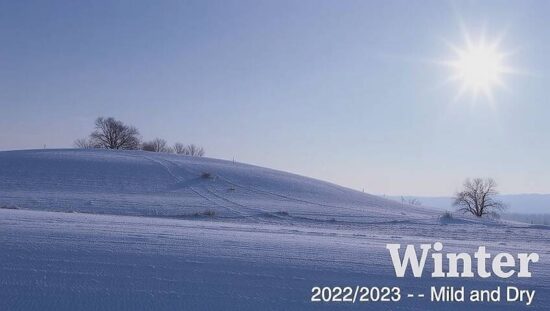Winter’s Temperatures and Precipitation Levels Below Average, Reports DWD
The recent winter has been the 14th in a row to be mild, with little to no snowfall, according to the German Weather Service (DWD) in its annual winter review, released on Thursday.
The average temperature for the winter months was 2.1 degrees Celsius, which is 1.9 degrees above the reference period of 1961 to 1990. Compared to the average of the years 1991 to 2020, the plus was 0.7 degrees. The coldest temperatures were recorded in mid-February, with the lowest temperature of -19.7 degrees Celsius in the town of Deutschneudorf-Brüderwiese in the Erzgebirge on February 18. The highest temperature was recorded in Metzingen, Baden-Württemberg, on February 21 at 18.9 degrees Celsius.
The winter saw a total of around 155 liters of precipitation per square meter, which is only about 86 percent of the average of the reference period of 1961 to 1990. Compared to the newer period of 1991 to 2020, it was even only around 82 percent of the expected amount, making it a dry winter, according to the meteorologists. A lasting snow cover only formed in higher elevations.
The number of sunshine hours also deviated significantly from the averages. With 194 sunshine hours, the winter exceeded the old reference period by 27 percent and the newer period by 14 percent. The high-altitude regions in the south, in particular, were very sunny, with over 300 hours registered in some areas. In contrast, the northernmost regions and coastal areas were cloudier, with as few as 150 hours of sunshine in some cases.
The weather patterns were warm and dry across all federal states. The lowest regional average temperature was recorded in Bavaria at -1.0 degrees Celsius and the highest in Bremen at 3.6 degrees Celsius. The most precipitation fell in the Saarland (245 liters per square meter), while Mecklenburg-Vorpommern was the driest (106 liters per square meter).





